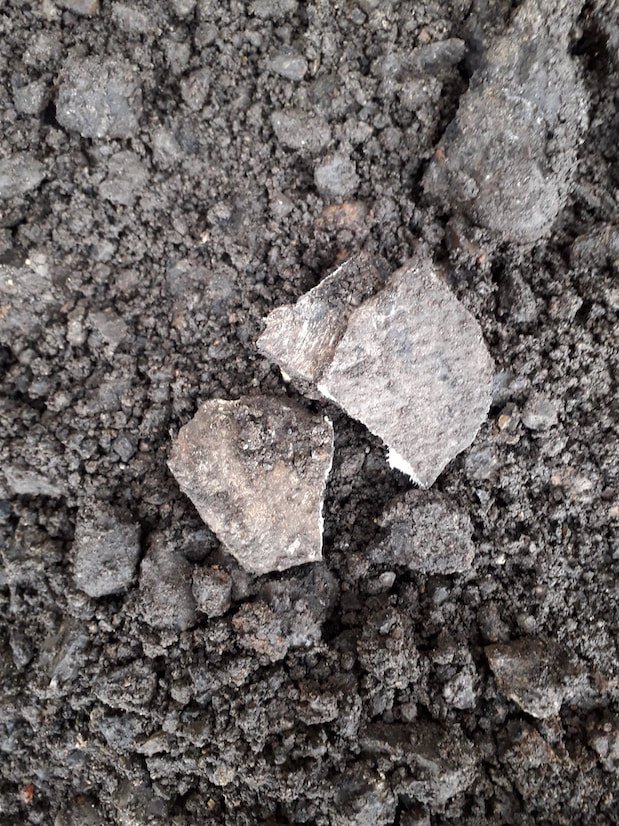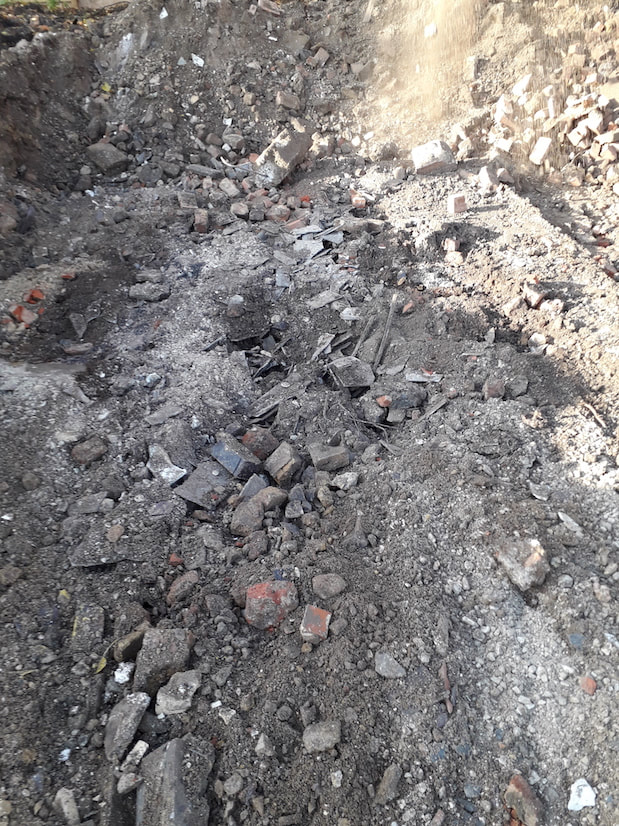|
In the last few blog posts I’ve been waxing lyrical about Rome and the adventures of my fictional characters in their second archaeological adventure, time now to head back to my adventures as a commercial archaeologist. So what have I been dealing with recently?
Dangerous things, I’ve been dealing with dangerous things! My recent sites have included brushes with landfill refuse, hydrocarbon contamination, used needles and everyone’s favourite toxic mineral – asbestos. The asbestos is the one I’m going to elaborate on as a quick internet search and talks with my new dig team indicate that a lot of archaeologists out there have no idea what this stuff looks like, though we all know how dangerous it is.
Asbestos was used for everything from the 19th century through to 1999 in the UK. The versatile fireproof, weather proof insulator was mixed up in everything from cement, cardboard, fabric, yarn, paper and even used in Hollywood special effects – remember the snow in the Wizard of Oz, or White Christmas – 100% pure asbestos, also marketed for private home snow decorations. Of course, now we know it contains a whole heap of horrible toxic material that sits in the lungs and causes all kinds of nasties so we all have to stay well clear and cannot use it in buildings anymore, though strangely it is apparently still used in the US and China. But although currently banned in the UK, this stuff is still everywhere – check the ceiling above you right now, is it Artex? That’s a white asbestos mix, don’t go drilling in it without a respirator.
I was working on a building site recently and vaguely expecting the odd bit to show up – we’d done an evaluation on the site and turned up a cache of the stuff in one of the trenches. Sure enough there it was, and oh boy was it a lot. Actually, it was enough for me to haul my team off site immediately and stand down the project until it can be professionally removed. What I’ve found most surprising though is how few archaeologists know what to look for. My current team are fairly fresh out of university and several of them remarked that they had no idea of what asbestos looked like – they do now as we saw plenty, but it struck a chord. Sure, we’ve all done the online asbestos awareness course but the images that we are shown tend to be of nicely rendered asbestos tiles, or cement which is in place, not broken and not decaying. Essentially not how we as archaeologists come across it.
When archaeologists find asbestos it is generally because it is buried in the ground – unless you’re doing a building survey but that’s a different issue. There are several reasons for this, most involve either a deliberate burial of the material, something that is illegal now, but still happens and frequently happened in the 70s and 80s on farmland. Other times it can be that we’ve stumbled across something like an old asbestos lined basement, water tank, drainpipe or even an old air raid shelter as some had asbestos cladding, the list goes on.
Anyhow Asbestos is fine when its stable, (your Artex ceiling is fine), the fibres are all encased and nothing is moving anywhere, but break it and those fibres are released. Yep even in the cement stuff. But when the archaeologists find it, the stuff has usually been buried in the ground for several years, and what happens to things in the ground? They decay, same with asbestos, fire retardant it may be, but even it can’t stand up to acidic soil and earthworms. So, when I scrape back a load of subsoil with a 20 ton mechanical excavator, what do I find? Stuff that looks like tile is the most common asbestos cement, though occasionally it can look like flexible grey metal, (think of a corrugated garage roof), it was also used for pipes so if you ever spot a drain pipe that looks a bit like it’s made of cardboard avoid it because you have asbestos. Essentially as an archaeologist, if it doesn’t look like something archaeological (ceramic or brick) and looks a bit odd: its probably asbestos. If you’re close enough to see a cross section, its fibrous composition is clear.
Actions: If possible, cover it up with plastic sheeting, clear the area and call the pro’s in to clear it out. As a last resort use the machine again to bury it but mark the position and still call the pro’s out to clear it. Do not tidy it up yourself. And definitely, most certainly: don’t eat it.
As a side note, archaeological studies have discovered asbestos being used by prehistoric people to strengthen ceramic pottery in the stone age. The word Asbestos itself comes from the ancient Greek for unquenchable and Pliny the Younger is widely (if not entirely correctly) thought to have been the first to notice the mineral’s detrimental effect on humans. There are also legends through the ancient world of Persian rulers who could clean their tablecloths by throwing them into the fire. So it’s not just modern asbestos that could prove problematic to the modern archaeologist. It seems humans have been messing around with its fire proof qualities for centuries. Other ancient sources cite asbestos as a cure for skin diseases, although it is possible that they meant soapstone as these terms have often been confused in texts.
1 Comment
18/9/2020 07:53:50 pm
Very good tips and interesting facts we can read from this well written article. Thank You S. M. Porter
Reply
Leave a Reply. |
S. M. PorterProfessional archaeologist and author, S. M. Porter loves history, adventure and digging in the mud. Her career is in ruins - just where she wanted it to be. Archives
June 2023
Categories
All
|




 RSS Feed
RSS Feed

